Updated 27.x.19 to get map working again, and then to fix the timelapse videos which got broken by WordPress change to “Gutenburg”. Grrrrr!
Is there anyone likely to be reading this who won’t know that we all got between the moon and the sun, carrying out the most extensive blockade of it’s light and warmth it’ll suffer in the entire 21st century? I suspect not.
So you all know about it.
I gather that very few people in the UK got to see it because the malevolent weather gods that have been persecuting the UK with a near or actual record heatwave for weeks,(I agree: with a lot of help from our climate change deniers and our general greed), chose to cover most of the UK with cloud.
The day had been very clear here and I was determined to see the eclipse if I could and the nearest times and compass bearings I’d found were for Chambéry and suggested that moonrise would be at 21.13, bearing 113°, a.k.a. ESE, and that the eclipse would reach its climax soon after that. We’ll come back to that last bit!
I had realised during the day that ESE or 113° was a bit of a challenge from Aime 2000: it was right through La Grande Rochette, the big rock, from me so I thought I was going to miss everything if I stayed in the comfort of the terrace next to the apartment. I tried to work out the skyline looking ESE from places I could reach on Cerise and thought that if I went off to a bit over the ridge I’d already been over twice in the last six weeks, I’d be OK. So, at about 20.00, wisely swapping cycling tights for shorts and putting a cycling top over my t-shirt and stuffing some gloves and a thin rainproof top in the rucksack. I set off. I had put binoculars, the camera and both its lenses, the interval timer that I’d ordered which had finally arrived, a few days late, that afternoon, and my very old tripod in the rucksack. I was ready for anything!
I was a bit surprised not to find myself in a stream of humanity heading that way and amused to be cycling across all sorts of guide markers from a running race that had happened up here that afternoon. I got to the ridge in good time and immediately realised that the track I thought would take me left to a good viewpoint was actually the wrong side of a pretty big spike on the ridge, and climbed savagely with little promise I’d get round to the ESE facing side of the ridge before my heart gave out! OK, I’m flexible and sensible, well, I’m flexible. That option was out. I worried a bit about those 113° of compass bearing, but it looked as if I could take the upper track to the right.
[Usual thing: if you click or double click on that you should get it full sized, same for all ‘photos below.]
That ‘photo above shows it above me. I reckoned that if I got along at a reasonable pace I should be in a good spot for 21.13. I set off. It was steep and very loose gravel and rubble track. It kept not giving me a view without mountains to ESE. Eventually, I stopped and decided it would have to do.
That’s a view back in one of my pauses to get my heart rate down! Oh, and it shows that the track I had seen on the map is there, I’d just failed to take in that it went off to the left quite a bit below the ridge so I hadn’t seen it when I’d stopped and worried about these damn compass bearings.
Eventually I decided one spot would have to do, it was gone 21.10, no moon was visible but I thought I should stop. I set up tripod, camera and timer and waited … for this rather poor sequence. [You should be able to use that quadrant icon in the bottom right to expand it to full screen. There is no sound and it’s about 36 seconds, as I think it will be telling you.]
It was breathtakingly beautiful and it was pink and clearly already shaded in that lower left quadrant. I can’t explain why some of the early images are dark, nor why one later one is clearly double image so presumably the tripod shifted. That does capture how rapidly it was going dark. The sun was behind the ridge but already below the horizon even had I been the other side but we were in that twilight where the sun is still illuminating thin high cloud and the atmosphere causing the blue to darken and dwindle and up the moon came. I think those were at 90 second intervals and the exposure time was in seconds and growing longer.
However, I realised that this wasn’t the full eclipse and I also realised it was damn cold. The showerproof but incredibly lightweight top went on and the gloves. But they had to keep coming off to look at the timer or the camera, or a ‘phone. After a bit I consulted the internet (these ‘phones are remarkable aren’t they?) and found a more detailed timing, still for Chambéry but this time marking the point of total eclipse: 22.20. Ouch. I jogged on the spot, I hugged myself. I wondered where everyone else in the world had gone. The moon got darker, and darker and higher, and darker, and yes, it went from pink to red. The sky went black and gradually more and more stars were visible. I never got the milky way proper, but the sheer number of stars was nearing that experience. There was near zero light pollution, I had to go the edge of the track and look SW to see the lights of Champagny and Courchevel beyond. Here they are from another earlier ‘photo before I decided to stop.
Almost no human light was messing things up where I was.
The camera stopped working: dead battery. Had I brought the spare? Yes! Much fumbling with very cold fingers removing camera from tripod, opening the battery hole, persuading the tired battery to come out, pushing the new one in with fumbling fingers and just about screwed the camera back on the tripod.
Eventually, I got this.
It’s not great. The last exposures were taking 30 seconds or more (I was counting between the sound of the mirror flipping up and it dropping down.)
I felt we were now in a race between seeing the complete eclipse, and frostbite. (OK, I know it wasn’t that bad, back here, today, I see the garmin record shows it only dropped to 6°C. That’s still damn cold when you’re underdressed for it! I gave up taking ‘photos largely because it was so dark it was hard to see the moon in the viewfinder.
To pass the time I took a ‘photo of the set up. Here’s Cerise leaning on a track side post and demonstrating that her reflectors work very well, and you can make out the tripod on the edge of the drop beyond.
These ‘phones are amazing but even they can’t get around the inverse square law so here’s one just of the camera and tripod. I felt they deserved to be shown properly.
Hm, maybe Cerise’s reflectors aren’t so good: that’s impressive flash back just from the glass of the viewfinder isn’t it?
It was also surprisingly spooky. I’m definitely not a particularly brave person. However, solid rock under my feet and no claustrophobic rock closing in above and around (I am not a potential speleologist), natural things don’t usually worry me. However, I found myself worrying quite a bit. Where was everyone? Those few torchlights I could now see way below me. Why were they there: that’s a terrible viewpoint? Would I freeze to death up there? (OK, that one was never serious but it really was odd how uneasy I got to feel.)
Two per century eh? This was radically different and more awesome than the last I saw, back in the last century, when I was working in Rampton. Then I watched from outside J’s little house in Retford with a less complete eclipse there and loads of light pollution. One thing happened then which was a quite impressive mix first of a lot of unusual noise from all manner of animals (OK, mostly dogs but the odd cat) and birds followed by, as people say, all of that going pretty totally silent for a few minutes near the maximum of that partial eclipse there. How would animals and birds sense that maximum? I guess they don’t and probably go silent when the moonlight drops below a certain point. I guess they’d have stayed silent for much longer then had it been a total eclipse.
Up there in Alps the cows below had long ago stopped lowing loudly and otherwise it was totally silent … but I’m pretty sure it would be every night once the cows go to sleep.
I held on to 22.30 when the moon was a barely visible dull red, slightly soft edged disc and I packed off and started to deal with the next challenge: the headlight that came with Cerise is legal I’m sure but produces a pool of light between one and two metres across, about two to three metres from the handlebars. (That inverse square law again, hm, actually, headlights aren’t such a point source but still.)
It was rapidly clear that walking and the occasional scoot for the less steep bits was the only way back. Hm, it really was cold though moving helped. Suddenly there was a lump at the edge of the headlight beam and it moved. Too big for fox or marmot … whoa, it was a man, lying down on the edge of the road to watch the moon. I was embarrassed to be causing so much light pollution and and quite rattled. I couldn’t understand his French at all at first but I switched the light off, got my brains back, and we did manage a few sentences. A few hundred metres further it happened again. Well, this time it was less bizarre: this chap was really quite tall and standing, not lying almost lost in the grass and his reflective top revealed him with ten metres to go. However, again my ear/brain for French seemed to have stayed back in Aime 2000 and I was embarrassingly clumsy. Again we agreed the moon, the whole impact on the night, was amazing and wonderful. I said I was cold (apologising to be wimping off without seeing the moon through to her normal state again). He said he too was cold (from what I could see of his clothes, I think he would have been, he seemed to have little more than me.) On I went.
From the ridge the track is wider but still nasty but cars had turned up and they two were reassembling drivers and passengers and heading down so I managed an odd return a couple of km to Plagne Villages and the first street lights by going very slowly between cars and then hitting the pedals fairly keenly when each car passed me so I could use their pathfinding ahead of me.
When I got nearly back to Aime 2000 I saw that the moon was white again and notched and tried to get some more ‘photos but it was a complete failure as cloud was now moving slowly over and largely hiding the moon. I gave up and cycled the last 400m, … and the damn clouds vanished. I dashed up the apartment but again the time lapse ‘photos were useless, this time it was a flare ghost from pointing pretty straight at the now very bright moon (exposure now down to about two seconds). This was best shot I got: the last notch.
It was a stunning experience: beautiful and, yes, somehow awesome to the point of a bit disturbing, for all I know the physics. I think the cold, the awareness that getting back would be tricky cycling, or a very long, cold push, and the frustrations with my (unrehearsed) attempts to get the time lapse images all contributed to rattle my composure but I wonder if some of it was simple awe.
There won’t be a next time, well, only for others much younger than me and for future generations. As I’m happy to have finally managed embedding an interactive map with track. Here’s the track of the journey up there to close with. Zoom out until you find your location and back in again to find where I am in relation to you?! (I think you have to click on the map to expand it in order to zoom out and pan it.)
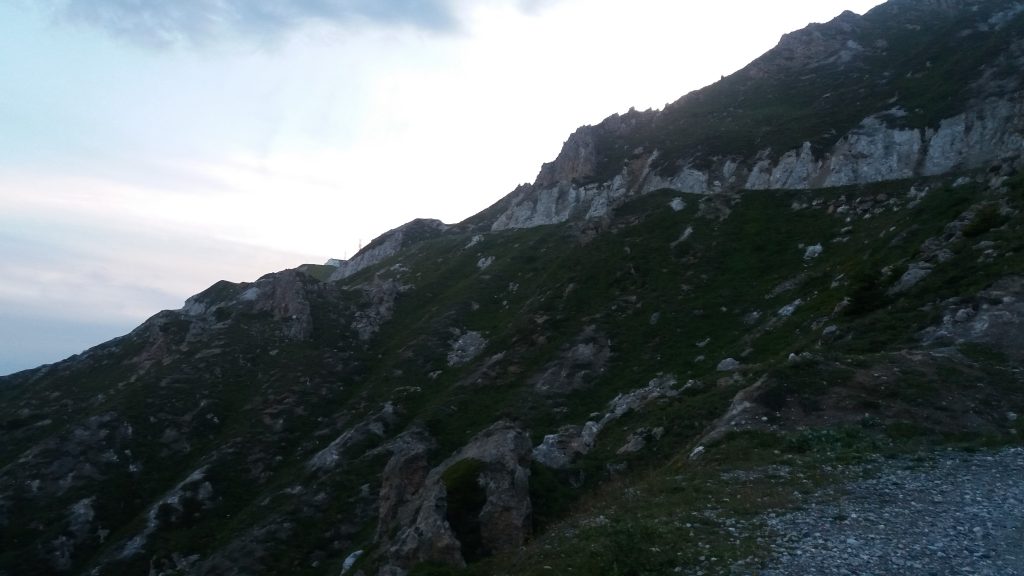
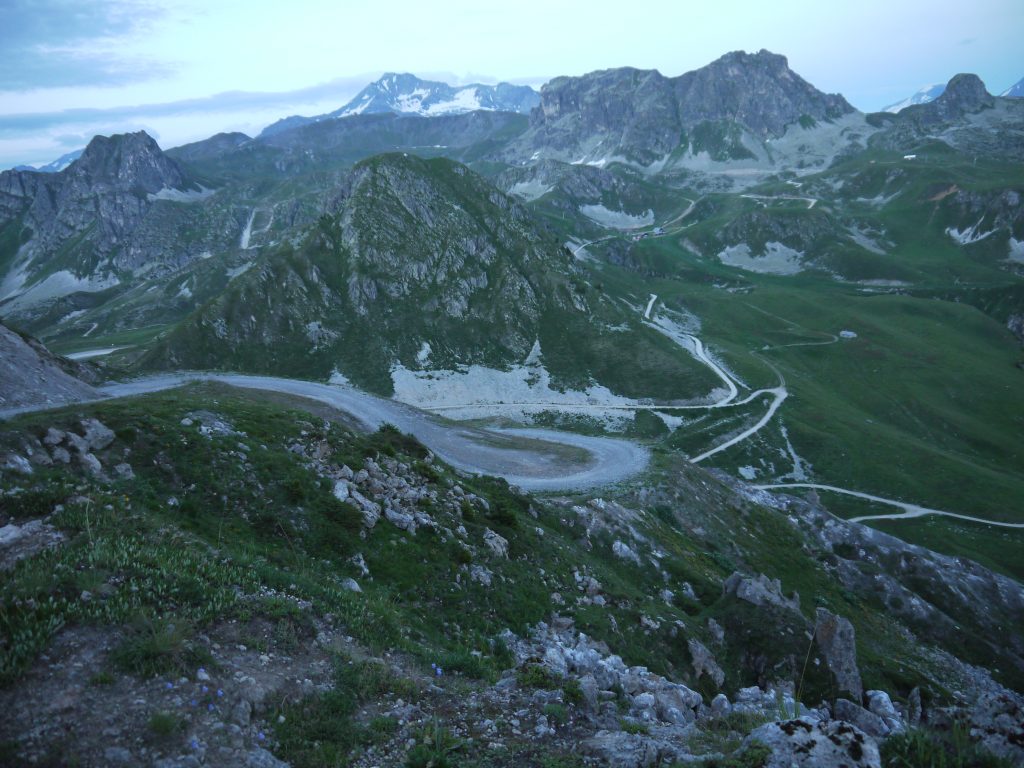
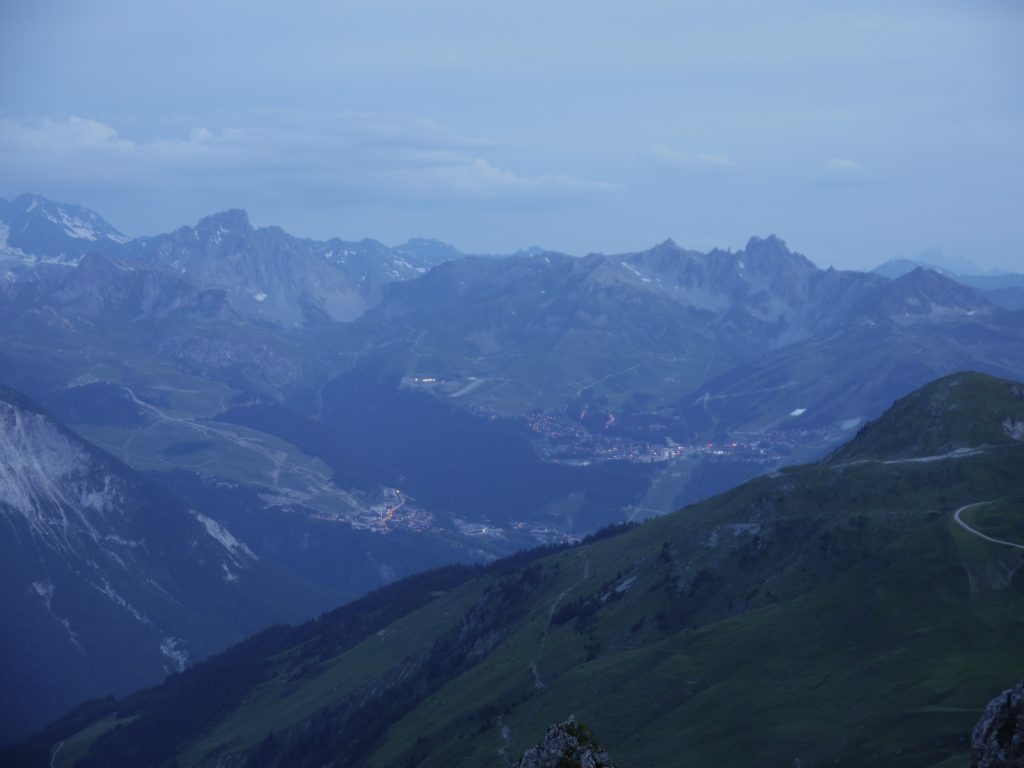

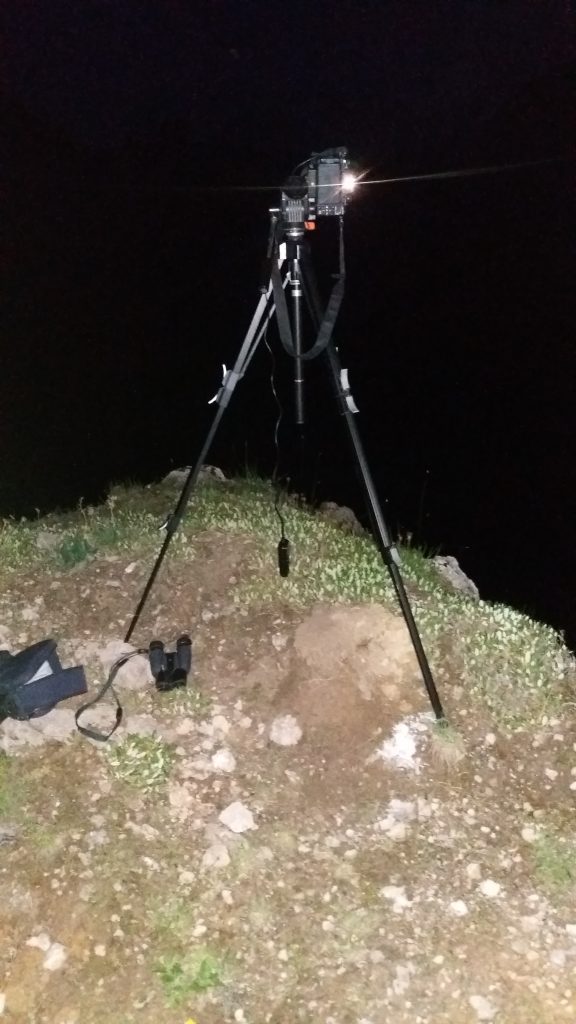
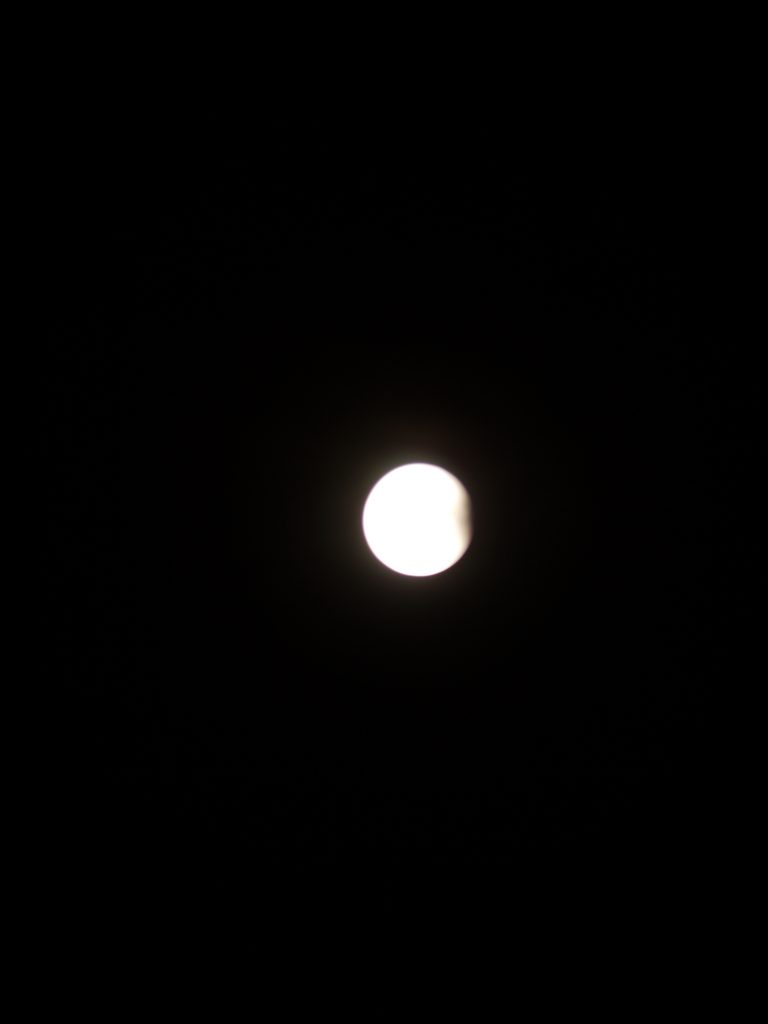
Really enjoyed this vicarious encounter with the eclipse – thanks so much for venturing forth to see and capture it in the chilly night. The cloud was dismal dense here.
Glad to provide a positive vicarious experience. I felt such a mix of awe, pleasure and irrittation with myself for poor preparation and having caught so little of a truly once in a lifetime experience but the irritation has mellowed and the pleasure and awe stay and a number of people have enjoyed the ‘photos which is good!